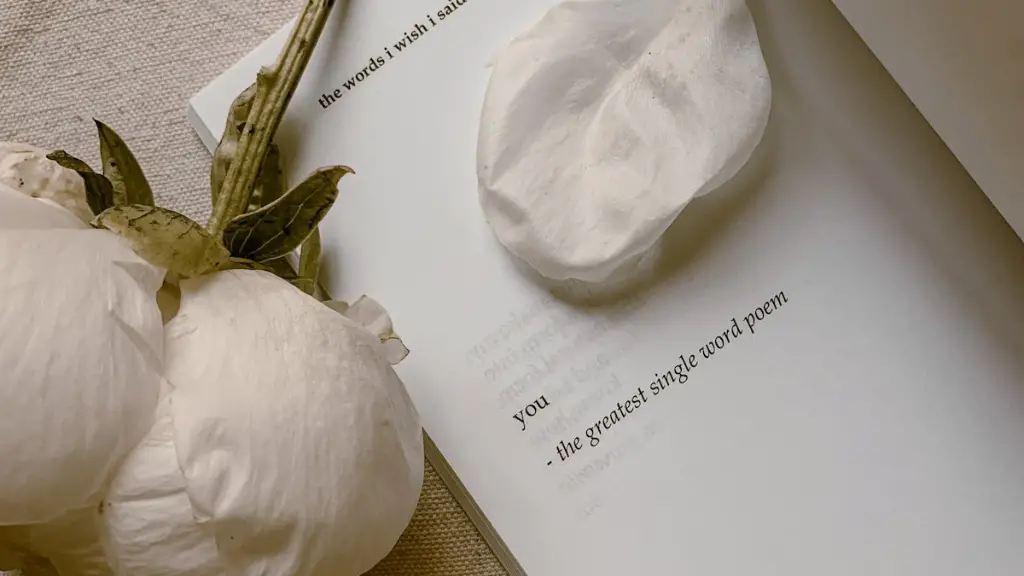Birches by Robert Frost is a poem written in 1916 that reflects on the natural beauty of nature and the metaphor of life. It has been interpreted in many ways, ranging from an account of physical labor to an exploration of mental transformation and the interactions between man and nature. The poem is narrated in three sections, each examining one particular element of the natural world. In the first section, Frost provides a detailed naturalistic description of “swinging birches” and the effects of the wind on them. In the second section, Frost shifts focus to his own desire to climb the birches and experience the joys of being in nature. Finally, in the third section, Frost reflects on the changes that nature has endured over time, and how this has affected his own sense of self.
Metaphorical Meaning
The poem’s core meaning lies in its metaphorical interpretation. Frost himself declared that the poem is not describing just one physical activity or natural element, but rather it is an expression of his “momentary stay against confusion”—a moment of inner peace amidst the confusion that life can bring. To this end, the elements of nature showcased in the poem have a deeper, more symbolic meaning. The birches, for example, are a metaphor for life, with their roots in the soil, reaching for the light and swaying in the wind—all of which can be interpreted as the journey of life and its struggles.
Similarly, the child-like imagery presented in the poem, such as the desire to swing on the birches, can be interpreted as a longing for childhood innocence. Moreover, the idea of “bending down the saplings” can be interpreted as an effort to regain balance in life, to find a sense of emotional equilibrium. By exploring these metaphors, the poem suggests that life is a spiritual journey which can be difficult, and it is up to us to find our own path among the confusion.
Nature as a Reflection of Self
The poem further suggests the idea of nature as a reflection of our inner selves. The narrator’s journey through the woods can be interpreted as a journey through his own thoughts and inner struggles. By meditating on the beauty of nature, the narrator embraces the idea of being one with nature, which allows him to find his true self. Furthermore, the narrator finds solace in the natural world, which helps him to realize his own metaphysical potential. He understands that he can battle the confusion of life through contemplation and meditation.
The poem concludes with the narrator reflecting on the changes in nature and how this has changed his own way of life. This suggests that nature can be both a mirror and a teacher. Life can be hard and confusing, but by getting in touch with nature, we can gain insights into ourselves and our own spiritual development.
Modern Interpretations and Commentary
Since its first publication in 1916, Birches has been widely analyzed and discussed by various writers and scholars. J.D. Hillis Miller, for example, went as far as to interpret the poem as an “epistemological drama”: an exploration of the wider knowledge of the speaker’s own life. Miller’s interpretation suggests the idea of the poem as an epitome of life: the birches and the winds can be viewed as a metaphor for life’s continuous cycle of loss, growth, and renewal.
More recently, contemporary writers have continued to reflect on the poem’s deeper meaning. For example, Patricia Bizzell and Bruce Herzberg have both described the poem’s spiritual dimensions, noting that the poem invites readers to reframe “expectations of the physical world and of their own place in it.” Authors such as David Kalstone have also argued that the poem can be seen as an exploration of the balance between life and art, and the “ever-changing moods of nature” that each can provide.
Frost’s Influences
Frost himself was heavily influenced by the philosophy of Transcendentalism as well as the works of other poets such as William Wordsworth and Henry David Thoreau. All these authors sought to reconnect to nature, to express a sense of inner peace, and to embrace the idea of individual identity. Frost introduces this idea of individual identity in Birches by including references to personal struggles that the narrator faces as he contemplates the natural world. By exploring this idea of individual identity, Frost suggests that we can find a sense of peace in our environment, no matter how chaotic the world may appear.
Conclusion
In conclusion, Birches by Robert Frost is an exploration of the natural world and how this can be applied to self-discovery. The poem expresses Frost’s own struggles against confusion and his search for inner peace, while also suggesting that nature is a mirror of our own selves. Thus, readers can take away a sense of rejuvenation and a message of hope that despite life’s struggles, inner peace can be had through meditating on nature and its beauty.
Gender Roles in the Poem
Throughout the poem, the narrator is presented as the male figure who is seeking his inner peace through the natural environment. His climbing of the trees is often seen as a metaphor for his journey through life, which can be interpreted as a sign of masculinity. In contrast, the female figure is often scenes as being more connected to the environment itself, through her nurturing of the trees and her ability to support them.
The poem also hints at both gender roles and the idea of human activity being seen as ‘dominating’ nature. Feminist writers have argued that the poem implies a sense of male superiority over the female, as the narrator seeks control over the natural environment. Similarly, it could be argued that by allowing the narrator to climb the birches, the poem suggests that male domination is the only way of engaging with nature.
In response to these interpretations, it has also been argued that Frost is less concerned with gender roles, and more interested in the human-nature connection. In this way, Frost can be seen as putting forward a more holistic view of the environment and its connection with the human condition. By not privileging one gender over the other, the poem can be interpreted as a critique of both traditional gender roles and the objectification of nature.
Symbology and Imagery
The poem is filled with a variety of symbols and imagery that serve to explore Frost’s themes of loss, growth, and renewal. The birches are presented as a form of nature that are both resilient and vulnerable, and that take on a somewhat human-like persona. The imagery of the birches swaying in the wind could also be interpreted as a metaphor for life, as the narrator expresses his own inner battles.
The image of the skipping stones on the lake is also significant, as it serves to express the idea of the ever-changing nature of life. By exploring this idea of life’s ever-changing nature, Frost is hinting at the importance of adaptation and how this can aid in finding inner peace. Similarly, the narrator’s act of bending the saplings can be seen as a symbol of his own inner search for balance and equilibrium.
Other images in the poem such as the snow, the ice, and the stars also serve to emphasize Frost’s idea of nature as a reflection of one’s inner self. The imagery of the snow and the ice can be interpreted as a way of expressing the idea of a new beginning, while the stars can be seen to represent the idea of hope and renewal. Overall, these symbols and images provide a more in-depth exploration of Frost’s themes within the poem.
Critique of Frost’s Poem
Despite the poem’s wide adoration, the poem has come under some criticism in recent years. For example, it has been argued that the poem oversimplifies nature and fails to depict the harsher conditions found in the environment, such as extreme weather. There is also a lack of diverse representation in the poem, as it rarely explores humanity’s connection to nature in any meaningful capacity.
Critiques also point to Frost’s focus on the idealization of nature, which leads to a perception of the environment as an idyllic paradise. This puts nature in opposition to ‘man-made’ elements, and causes the poem to serve as yet another example of the ‘iciness’ of modern life. Furthermore, the poem’s lack of discussion on the consequences of human activity on nature reinforces the idea of nature as an object to be dominated, rather than a living, breathing creature.
In response to these critiques, it has been argued that the poem still serves to emphasize the importance of nature in our lives, and that it can serve as a reminder to reconnect with nature and to embrace our own spiritual growth. Despite some of its flaws, it is undeniable that Birches by Robert Frost is a timeless poetry classic, and its themes and metaphors still have relevance today.




